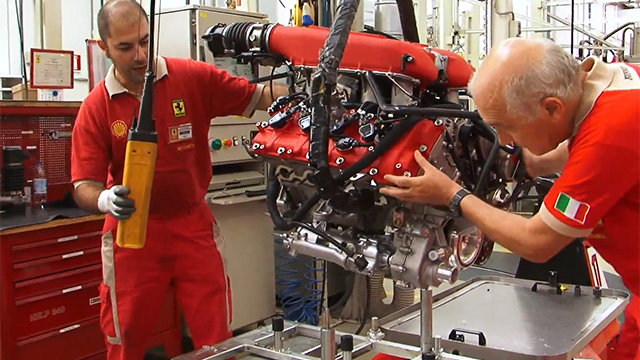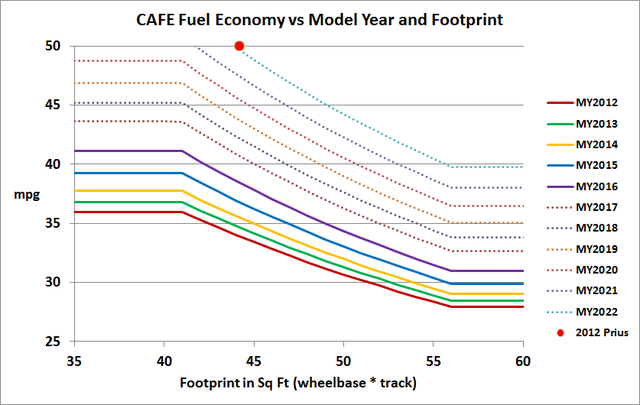
At the end of August this year, the US Department of Transport's National Highway Traffic Safety Administration (NHTSA) and the US Environmental Protection Agency (EPA) announced new standards to significantly improve the fuel economy of cars and light trucks by 2025. Last week, we took a look at a range of recent engine technologies that car companies have been deploying in aid of better fuel efficiency today. But what about the cars of tomorrow, or next week? What do Detroit, or Stuttgart, or Tokyo have waiting in the wings that will get to the Obama administration's target of 54.5 miles per gallon (mpg) by 2025?
The problem is historic
Whatever the technology, it's going to involve gasoline for at least the foreseeable future in the US. Automotive history helps us understand why. Author and journalist LJK Setright told us "we need hardly worry about who invented the motor car." While there are several inventors to whom the first horseless carriages can be attributed, Setright had a point when drawing the starting line through 1885 and Karl Benz's gas-powered three-wheeled machine. Victorian and Edwardian car makers drew on a wide range of fuels and engines. If a man in the street then predicted the next century, it wouldn't have been unreasonable to expect a diverse vehicular landscape. Back then, electric cars were marketed to women as they neither gave off clouds of exhaust nor required someone strong to crank the engine over (the invention of the electric starter motor finished this feature off). By 1900, Thomas Edison was ready to pick this technology as the winner.Electricity might be making a comeback now, but it was the internal combustion engine—powered either by gas or diesel—that made automobile what it is. Unlike steam, drivers didn't need to stop for heavy fuel to burn or to top up the water for their boilers. Back then, much like today, batteries didn't charge fast enough or contain enough energy to meet most of our needs. But liquid hydrocarbons are cheap and easy to extract, they have good energy density, and don't require high pressure containment. So for over a century, the infrastructure to support the gas-powered car built up across the globe.
Of course, burning hydrocarbons isn't problem-free. They are a finite resource, one we're pulling out of the ground much faster than it took to get down there in the first place. Many of the richest deposits are controlled by autocratic or otherwise unpleasant regimes, upon which another nation might not wish to depend. And then there's the waste problem: nitrogen compounds can cause respiratory disease; lead additives affect development; and the big one, carbon dioxide, drives climate change. Despite these issues, the depth of infrastructure to support the gasoline engine is such that, for the foreseeable future, alternatives like hydrogen or even electricity will remain very niche choices.
The MPG equation
The basics of today's engines may have been put together more than 130 years ago, but that hasn't stopped engineers and scientists from finding new ways to travel further on the same gallon. That benefits drivers who have to pay to fill up their tank, as well as to society at large. It's why governments are using differing approaches to increase fuel efficiency. In Europe, that's mainly via escalating gas taxes, but here in the US we have the Corporate Average Fuel Efficiency (CAFE) regulations.

CAFE was introduced following the oil crisis in 1979 resulting from the Iranian revolution. It started with a modest goal, a mere 18 mpg, something even the Ford Model T was capable of achieving. CAFE increased average fuel efficiency over a number of years, up to 27 mpg in the mid-1980s, but the 1990s saw both oil prices and the idea of the US government exercising regulatory power both drop like stones. There we languished, until rising oil prices and growing sentiment about the need to address climate change intervened (such are the difficulties of making anything happen in Washington, DC). It was actually the car companies that moved first this time around, sensing that parsimonious punters might respond well. DC followed, and in August 2012, the government published new CAFE regulations that will raise average fuel economy to 54.5 mpg by 2025—almost double what they were a mere two years ago (you can find an interesting infographic showing the last 100 years of fuel economy here.)
Now, it's important to note that what CAFE says is a 54.5 mpg car and what the EPA says is a 54.5 mpg car are not really the same thing. For one thing, CAFE standards apply to, and are calculated for, a company's entire product lineup based on a complicated formula. That isn't the same as the simulation of supposedly real-world driving conditions that the EPA uses. What's more, within that product lineup, cars with a smaller footprint (say, a Mini) are expected to get better mileage than larger vehicles (your trucks or SUVs). So, in 2025, a car with a footprint of 41 sq. ft or less will be expected to deliver 61 mpg under CAFE, but only 43 mpg according to the EPA. At the other end of the scale, a truck with a footprint greater than 75 sq. ft only needs a CAFE rating of 30 mpg, or a mere 23 mpg from the EPA. Suddenly it seems like we're not even asking that much!

At this point, some of you might be thinking "there are plenty of fuel-efficient cars, but they're all small and on sale in Europe!" Euro car nerds are but a tiny minority within these great United States. Most car buyers, whether they're in Manhattan, New York, or McAllen, Texas, are not going to be lining up for VW Lupos or Renault Twingos—even if they can do 70 mpg. But that's a problem of taste—let's worry about the technology first!
How the magic may happen
The first technology to consider is start-stop. It's arguably a current technology, at least in Europe where I've been hard pressed to rent a car without it. In fact, you could even get a VW Golf equipped with an early system as far back as 1994, but they didn't sell well. Since this is a US-centric site and start-stop is only just beginning to arrive on US roads, it counts.
Start-stop is designed to save gas when it's being most wasted, which is when the engine is running but the car is stationary (i.e. in a traffic jam). Simply, when the car comes to a halt, the engine cuts out. When it's time to move another car length forward, the engine refires and the driver carries on their merry way. One reason for the prevalence of start-stop in European cars, and its late arrival on these shores, is the preference our continental cousins have for manual transmissions. That's because stopping the engine when the car is stationary is the easier part.

As we discussed in part one, car engines are made up of many components with inertia and momentum. This means they can be started quickly, but not instantaneously. It's not so much of a problem with a manual transmission, as selecting first gear from neutral refires the engine (in practice—I've found it's still horribly easy to stall when trying to get moving quickly). But companies like Ford found it wasn't quite that simple with automatic transmissions.
In order to keep the gearbox's hydraulic pressure up, Ford fitted an electric pump. Also, to minimize the delay between the driver wanting to dart into an opening in traffic and the car moving, the transmission is kept in gear instead of dropping to neutral at a stop. "We had to develop some unique control algorithms for the engine and transmission to overcome this obstacle and still ensure an extremely quick, smooth, and quiet restart," said Birgit Sorgenfrei, Ford’s Auto Start-Stop program manager.
And to prevent the nightmare scenario of cars stranded in traffic jams with dead batteries, the control software also monitors the electrical drain on the car (from AC, audio, headlights, etc.) and disables start-stop when necessary. While start-stop doesn't offer much in the way of benefit when it comes to the EPA's fuel efficiency calculations, in city driving, such a system should be able to realize a gas saving of up to 10 percent. Not too shabby, but still not 54.4 in the near-term. Where do engines go from here?
The automotive industry has come up with plenty of ways to increase the efficiency of existing engines. Unfortunately, to reduce fuel consumption and emissions to the low levels of future standards, we can’t just rely on incremental improvements—entirely new kinds of internal combustion engines need to be developed. Fortunately, the research and industrial community has known this for the past few decades. They've been hard at work coming up with these.
Before talking about the new engine concepts, first we’ll dig a little deeper into how traditional engine types work to understand their limitations.
reader comments
351